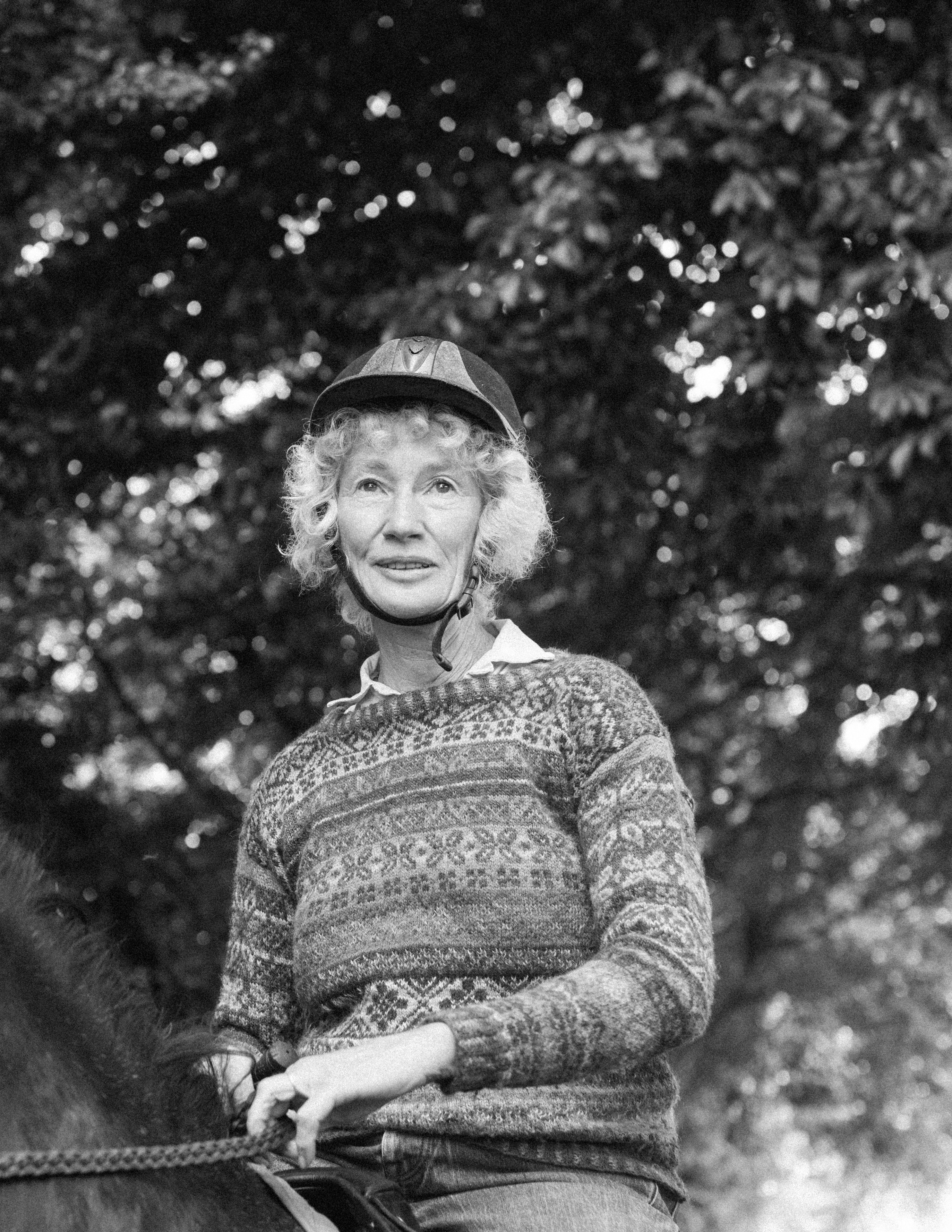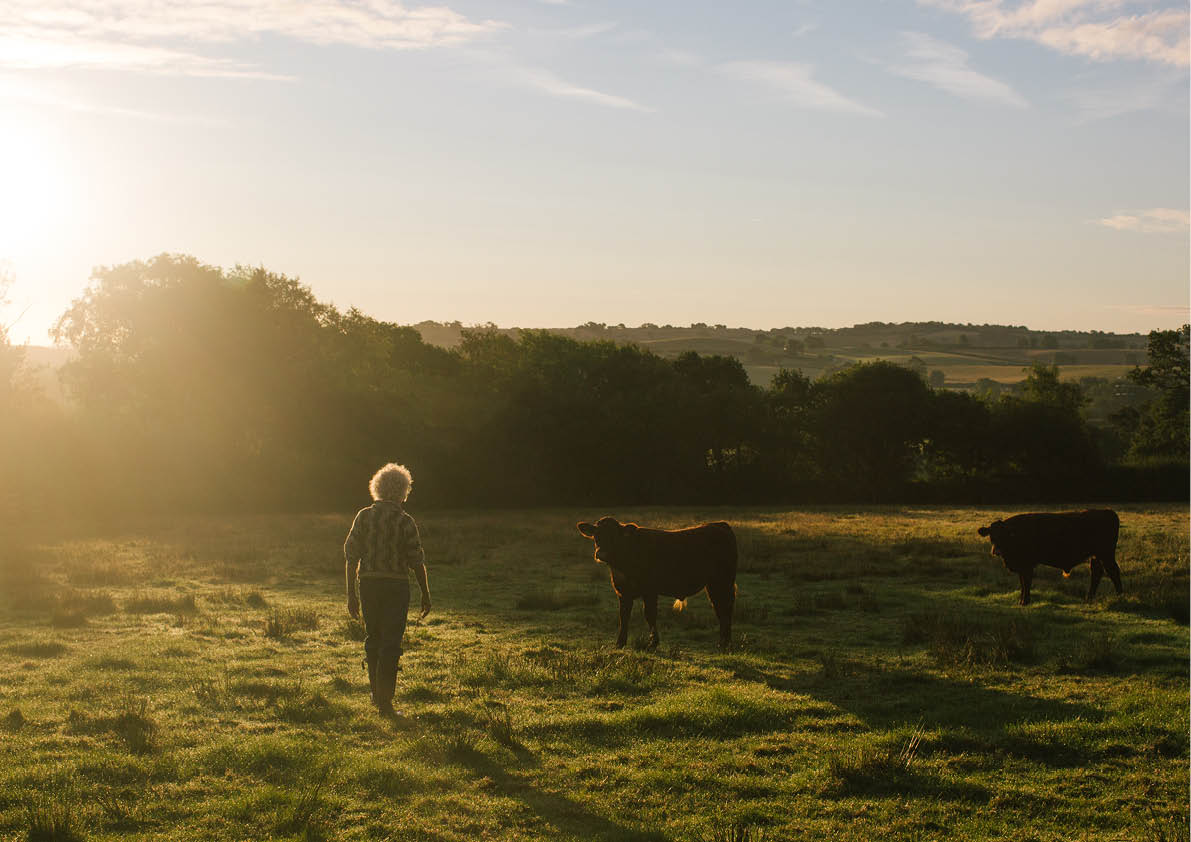
For the series TOAST Portraits journalist Mina Holland and photographer Elena Heatherwick meet the people whose treasured TOAST pieces some archive, some new have stood the test of time. First up was Katy Brett, then Genevieve Dutton and Dawn Worsley, now we meet the vet Kat Bazeley.

When you've a menagerie of creatures as Kat Bazeley does at her home, School House Farm in Dorset there's always someone who needs feeding, grooming, letting out. Having animals is like a metronome: the four-legged give life its rhythm.
Kat's day starts early with the pulling on of some jeans, a men's pair she bought years ago at a nearby TOAST outlet, and one of the many Fair Isle sweaters she has knitted over the decades. She pads down to her kitchen to fill a thermos with tea, then goes outside to the field and catches Albert, her horse, who she ties to the fence and grooms with a series of brushes that run like clockwork: rubber curry comb, used in a circular motion to get rid of any almost-shed hair; dandy brush, to clean off dirt; body brush to give his coat some lustre though not too much, you don't want to remove any important natural oils.


I wish I'd bought ten more pairs of these jeans, Kat says, separating a knot in Albert's flamboyantly feathered fetlock, it would've sorted me out with riding clothes for the rest of my life. TOAST clothes being the only garments she buys new she likes them for their simple designs, good colours, and because they last. Most of her other clothes are found in charity shops or are homemade.

Though she's been knitting since her children were small, Kat started to make clothes more seriously a few years ago after seeing an ad for dressmaking classes in a local paper. She was still working as a full-time vet at the time and would drive straight from work to the nearby town of Lyme Regis, where she'd sit in a little room of six sewing machines. It was a chance to play around with ideas and fabrics she'd collected over the years nice pieces of linen, upholstering tweed, samples of Liberty print the culmination a jacket that Kat wore to a wedding that year.

What was a mere hobby a few years ago has this year evolved into (quite literally) a cottage industry for making one-of-a-kind pieces mainly coats, jackets, waistcoats under the brand name Bluebarn.Life. She has fast escalated a mere pastime into a business extraordinary, I think but then I quickly get the impression that Kat isn't someone who does things by halves.

In the eighties, she and her husband Pete moved to Vanuatu in the South Pacific he to be the archipelago's chief vet, she to be a veterinary adviser to a campaign promoting the beef industry there. There weren't enough calves being born, so I decided to study beef fertility, travelling around the islands and speaking to smallholders: talk about a dream job! They decided to become parents around the same time, adopting Sam, a baby boy from Fiji, and two small brothers Hector and Nick from Colombia; all three of them born within 12 months of one another.

The family moved home to the UK in 1993, back to the south-west, which Kat says she has called her home since her first day at Bristol University. I vowed I would never live in the south-east again from that moment! I love the greenness here, the slower pace, how lovely all the people are. As a vet, you're very much at the heart of a rural community like this. Perhaps that's why she found it so difficult to give up work.
Even though Kat has retired from veterinary practice, she has remained involved in a heifer monitoring project, keeping her sort-of working. This came about ten years ago, when she started to work on a government scheme to help develop the skills of rural women, all of whom wanted to learn how better to rear calves. This scheme segued into a calf and heifer vaccine trial, a project following 600 heifers from birth across eight farms in the area. Samples of heifers were vaccinated against pneumonia to see how this influenced their weight and eventual milk yields; Kat found that the day-to-day welfare of the animals (how well they were fed, how warm they were kept) had a greater impact on their wellbeing and productivity than vaccinations.

I got the kit to weigh heifers, says Kat, and I became completely obsessed with it! She says that as long as you have a date of birth for the female calf, you can monitor whether or not it's an optimal weight for its age and that, while no one thought farmers would actually start monitoring their heifers themselves, all the best ones now do. The project subsequently gave Kat the opportunity to do workshops at farms and veterinary practices all over the country. As productivity levels go, not bad for retirement'.
Kat tells me all this as we amble down to the beach at the chocolate box town of Lyme Regis. She needs regular fixes of the sea, and loves the primitive drama of the Jurassic coastline: the hills alongside the cliffs overlooking the water. We stop to take some pictures near the shore and Kat's outline is distinctive she has a singularly practical glamour about her.

She wears a pair of TOAST trousers bought a few years ago once cream in colour and a size 16, now dyed dark grey and with darts at her narrow waist and a swing coat she made from antique plum linen, lined with a moir silk her son Sam found in London. She loves clothes her personal style is one that champions practical shapes and gorgeous textiles but has limited time for photos on the beach (I've almost had enough). She glances at her watch; there's probably a horse that needs feeding.
Words by Mina Holland. Photography by Elena Heatherwick.

Add a comment